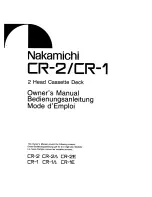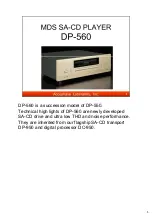
Encoding Requirements and Recommendations
19
High Definition (HD)
Encoding Requirements
Failure to follow the encoding guidelines may result in issues such
as uneven playback, blocky output, or frozen video.
1. The HD encoding format supports Transport Streams and
Program Stream
MPEG 2 files of audio/video or video-only
files, or audio-only (Elementary Stream) files. All 18 of the
standard ATSC digital television formats are supported.
2. Audio compression formats:
Dolby Digital (AC3)
MPEG 1 2-channel layers I and II
MPEG 2 2-channel Layer II
3. Audio sampling rate of 48 kHz.
4. Frequency response is 20 Hz – 20 kHz +/- .5 db
5. Audio output level up to 4v p-p
6. Audio output impedance 620 Ohms
7. When creating a playlist of videos, all files to be played in a
single playlist must have a common Program Identification
(PID) for the audio stream, as well as a common PID for the
video stream. In addition to having the same PID, the files in
the same playlist should also have the same audio format as
well (example: either Dolby Surround, MPEG-2 or elementary
video only with no audio data).
8. The video and audio data streams in each file should be as
close to the same length as possible, exact length is preferred,
and beginning and ending at the same time stamps.
Summary of Contents for Mantis MC
Page 1: ...Mantis MC User Manual...
Page 16: ...xiv...
Page 30: ...14...
Page 38: ...22...
Page 44: ...28...
Page 118: ...102...
Page 140: ...124...
Page 146: ...130...
Page 228: ...212...
Page 244: ...i 14...
Page 245: ......
Page 246: ...813 0059c 2005 Focus Enhancements...
















































